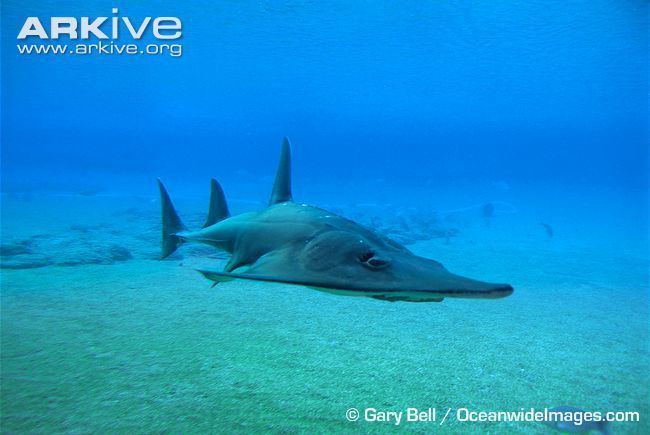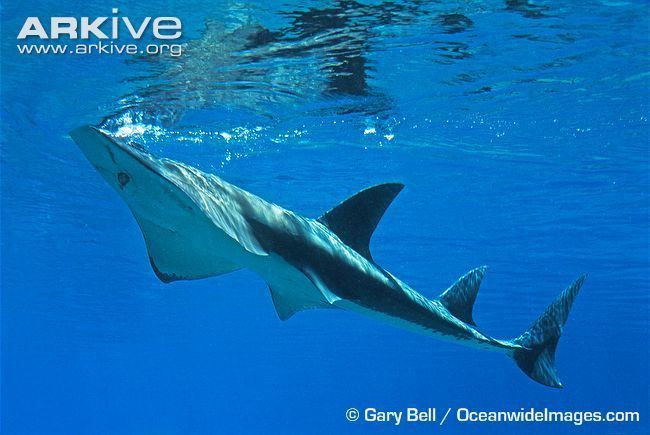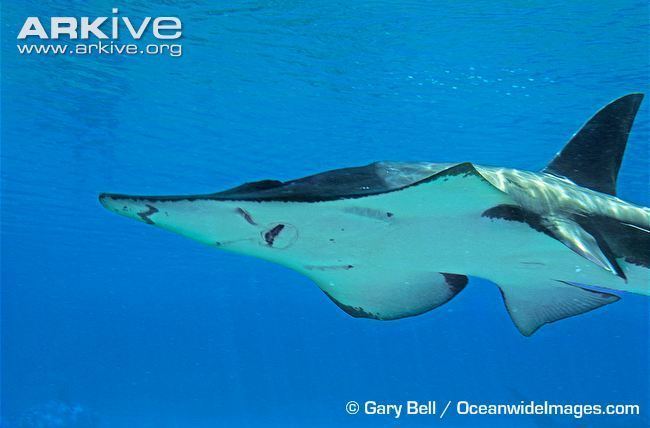Family Rhynchobatidae Higher classification Rhynchobatus Order Rajiformes | Genus Rhynchobatus Phylum Chordata Rank Species | |
 | ||
Similar Rhynchobatus, Guitarfish, Rhinobatos, Bowmouth guitarfish, Rhina | ||
Giant guitarfish eye gymnastics
The giant guitarfish (Rhynchobatus djiddensis) is a species of guitarfish in the family Rhynchobatidae.
Contents
- Giant guitarfish eye gymnastics
- Fish the sea giant guitarfish sandshark caught at kosi bay south africa
- Taxonomy and range
- Description
- Diet
- Habitat
- Interaction with man
- References
Fish the sea giant guitarfish sandshark caught at kosi bay south africa
Taxonomy and range

The giant guitarfish was previously believed to range throughout a large part of the Indo-Pacific, but recent evidence has shown that it, as traditionally defined, actually was a species complex consisting of 4 different species. In addition to the giant guitarfish, this complex includes the white-spotted guitarfish, the broadnose wedgefish and possibly the smoothnose wedgefish. With these as separate species, the giant guitarfish has a relatively restricted range: It is found only in the Red Sea and the tropical western Indian Ocean as far south as South Africa.
Description

A large fish reaching up to 3.1m long and weighing as much as 227 kg. The colour underneath is white and overall dark greyish or olive above. Large individuals lack the distinct white spots of the closely related white-spotted guitarfish (though some white-spotted guitarfish are essentially unspotted too). It is ovoviviparous, and a female can give birth to litters of up to 10 young.
Diet
The giant guitarfish feeds on bivalves, crabs, lobsters, squid and small fish.
Habitat

It is a shy fish, found from 2m to 50m depth, inhabiting areas with sandy sea floor. These are generally around coastal reefs or reef flats, but they will sometimes venture into the brackish waters of estuaries.
Interaction with man

The giant guitarfish is harmless to humans. It is listed as vulnerable on the IUCN red list as its population are believed to have declined significantly due to unregulated high levels of exploitation for its flesh and fins; the latter for shark fin soup. Its low fecundity and presumed slow growth rate make it highly vulnerable to unsustainable exploitation.
